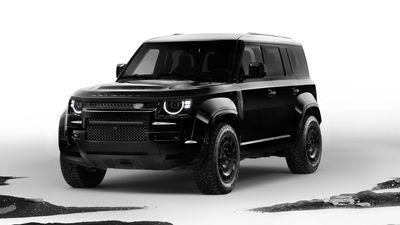Why The Lancia Integrale Is A Proper 90s Hero Car
The Lancia Delta was unquestionably the greatest rally car of the World Rally Championship's Group A era. Six consecutive Manufacturer's Championships and four Driver's titles are proof enough of that. And yet it shouldn't really have worked.
When the infamous Group B category was canned at the end of 1986 after a string of devastating fatal crashes, it left most teams without a suitable car for '87. Lancia hastily cobbled together the Delta HF 4WD, using a 2-litre, turbocharged engine and a four-wheel-drive system that utilised a centre viscous diff and a Torsen rear. It was, in many ways, a deeply flawed car.
It was already old for a start (the Delta was launched 1979). The wheelarches weren't big enough, so the car's wheels and, crucially, brakes were too small. There wasn't enough suspension travel. And the transversely-mounted engine, coupled to the HF's tiny size, meant it was difficult to service. But it didn't have any credible opposition, so Lancia dominated the 1987 season anyway.
Part way through 1988, Lancia introduced a new and improved Delta: the Integrale. This featured more power and much bigger wheelarches, which addressed many of the previous car's problems. By this point though, the new Toyota Celica GT4 was becoming a major threat. The battle between the Italian and Japanese teams would become the driving force behind the Integrale's development.
1989 brought a new 16-valve cylinder head, which was enough to keep the aging Delta just ahead of the opposition for another couple of seasons. By '91 things were getting a bit silly, with both Toyota and Lancia rumoured to be operating with blank cheque books. Power outputs were around 400bhp (the rules set a nominal limit of 300).
It was obviously all becoming a bit much for Lancia, the works team pulling out at the end of the '91 season. The Jolly Club team took over the effort in '92, with technical support from Lancia, who developed the new Integrale Evoluzione. It was the ultimate version of the now 13-year-old Delta, with a stiffer body, massive 'arches and spoilers, bigger brakes, better suspension and even more power. Lancia added a sixth Make's title to the trophy cabinet, but really only because Toyota had a tough year with a brand-new Celica.
And that was it. Jolly Club and other teams persisted with the Integrale for another few seasons, but it was completely outclassed by the Toyota, the Escort Cosworth and the Mitsubishi Evo. But of course, rallying was only half of the Integrale's story. The beauty of the Group A rules was a clause that stipulated at least 5000 road-going versions of the competition car had to be sold to the public. What the public got was one of the greatest driver's cars ever.
The bare numbers don't make particularly impressive reading, these days. The original Integrale 8-valve only had 185hp, while the last-of-line Evo 2 had 215hp. And while the 4WD-assisted acceleration was impressive (0-62mph in 5.7 seconds for the 16v cars), top speeds barely bettered 135mph. But the numbers aren't the point.
No, what makes the Integrale so special is the way it goes down the road. The in-gear shove is immense and the handling is epic; as you'd hope in a championship-winning rally car. It's short, squat stance gives it fantastic agility and stability. The four-wheel-drive shuttles up to 44 per cent of the power to rear wheels, giving amazing grip.
But more than that, it's the whole character of the car that gets you, the way it fizzes and buzzes with energy. It's a car that makes you happy, even if you're just looking at pictures of it. So happy in fact, that you won't care about the crashy ride. Or the utterly crap interior, fact the steering wheel's on the wrong side or the running costs.
Which is best? Well, the purists would say the original 8-valve. But this is about 90s Heroes, so it has to be the muscle-bound Evoluzione. It's the ultimate version and by far the best looking. Personally I prefer the darker colours, like this gorgeous Verde York version that's currently on the market. Incidentally, that £24k price tag is strong, but not excessive. A good, usable early car will set you back around £10,000.
The Integrale is often put up against the BMW E30 M3 as the one of greatest driver's cars of the late Eighties and early Nineties. That is no coincidence. Both were built to go racing and both were honed to perfection to do battle on track and stage. It's just a quirk of the rules that they existed as road cars at all. They are the ultimate expression of what a homologation special should be and that makes them great. But I think the Integrale is just a little bit greater.













Comments
No comments found.